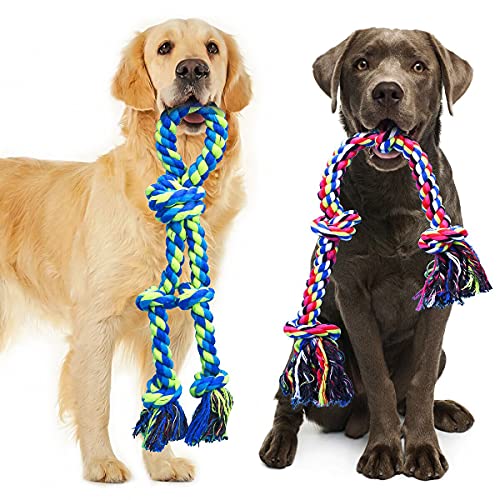All You Need to Know About Microchipping Your Golden Retriever
If you’re a new Golden Retriever owner, you may be wondering about the benefits of microchipping your furry companion. As someone who has worked with thousands of dogs through dog shelters and breeders, I can confidently say that microchipping is a simple and effective way to ensure your dog’s safety and protection.
This article will cover everything you need to know about microchipping your dog, from understanding its purpose and benefits to choosing the right microchip and registration service. We’ll also discuss the microchipping process and what to expect, as well as how to maintain and update your dog’s microchip information.
If you’re unsure about whether to microchip your Golden Retriever, or just want to learn more about the process, keep reading to discover everything you need to know.
Understanding the purpose and benefits of microchipping your dog
As someone who has worked with thousands of dogs through dog shelters and breeders, I cannot stress enough the importance of microchipping your beloved Golden Retriever. Not only does microchipping ensure that if your furry friend ever gets lost, they can be easily identified and returned to you quickly, it also provides a host of other benefits.
Firstly, microchipping is a simple procedure that involves inserting a tiny chip under the skin between your dog’s shoulder blades. This chip contains all the necessary information about your pet such as their name, address and phone number which can then be accessed by scanning devices used by vets or animal shelters should they become lost.
Secondly, having a visible tag on their collar is simply not enough. Collars can fall off or get removed during playtime leaving no way for anyone who finds them to identify them properly.
Thirdly, having an up-to-date vaccination record on file with the vet ensures that if found injured or unwell while wandering around without you knowing it yet – those records may save precious time in treating any potential illnesses or injuries before things get worse!
In conclusion: Microchipping provides peace-of-mind for Golden Retriever owners who love dogs; ensuring that should anything happen – whether it’s getting lost at home while playing outside in unfamiliar areas – being able to locate and reunite with our furry friends quickly is paramount!
The Microchipping Process: What to Expect and How It Works
Microchipping your dog is a simple and painless process, but it can provide invaluable peace of mind for pet owners. As someone who has worked with thousands of dogs through dog shelters and breeders, I highly recommend microchipping as a way to ensure your furry friend’s safety.
The microchip itself is about the size of a grain of rice and is inserted just beneath the skin between the shoulder blades using an injection-like device. Most dogs don’t even notice it happening! The chip contains a unique identification number that can be read by special scanners used by veterinarians, animal control officers, and shelters.
In case your Golden Retriever ever gets lost or stolen – which unfortunately does happen – having them microchipped means they have a much higher chance of being reunited with you quickly. It’s important to make sure that you keep your contact information up to date in the registry associated with their chip so that if they are found, you’ll be notified right away.
So if you’re teaching someone new how to take care of their first Golden Retriever (or any other beloved pup), make sure they know about this valuable tool for keeping pets safe! The small investment in time and money could save heartbreak down the road.
Choosing the right microchip and registration service for your dog
Choosing the right microchip and registration service for your beloved Golden Retriever is an important decision that can greatly impact their safety and well-being. As someone who has worked with thousands of dogs through dog shelters and breeders, I understand the importance of this decision.
When choosing a microchip, it’s important to consider factors such as size, weight, and compatibility with various scanners. A smaller chip may be more comfortable for your furry friend but could potentially be difficult to detect in case they get lost. On the other hand, a larger chip may provide better detection but could be uncomfortable or even harmful for your dog.

In addition to selecting the right type of microchip, it’s equally crucial to choose a reliable registration service. Make sure you research different companies thoroughly before making any decisions – some services may have limited coverage areas or require additional fees for certain features.
Ultimately, investing in quality microchipping and registration services will give you peace of mind knowing that if your precious pup ever gets lost or separated from you – they’ll have a higher chance of being reunited with their loving family thanks to advanced technology!
Maintaining and updating your dog’s microchip information
As someone who has worked with thousands of dogs through dog shelters and breeders, I cannot stress enough the importance of maintaining and updating your dog’s microchip information. Microchipping your furry friend is a crucial step in keeping them safe, but it’s equally important to ensure that the chip information remains current.
The process of microchipping is simple and relatively painless for dogs. A tiny chip, about the size of a grain of rice, is implanted under their skin between their shoulders. This chip contains a unique identification number that can be scanned by animal shelters or veterinarians if your pooch ever gets lost or separated from you.
However, simply implanting the chip isn’t enough to keep them safe. It’s essential to register your pet with an accredited database service so that they can link back to you in case they are found by someone else.
Additionally, it’s critical to update this information whenever there are any changes in contact details like moving house or changing phone numbers. Otherwise, if Fido ends up at an animal shelter hundreds of miles away from where he was last registered – his old address will be useless!
In summary: Microchipping provides peace-of-mind for Golden Retriever owners who love their pets; however ensuring up-to-date registration on databases helps reunite lost pets with families quickly!
Common Questions and Concerns about Microchipping Your Dog
As someone who has worked with thousands of dogs through dog shelters and breeders, I understand the importance of microchipping your beloved Golden Retriever. However, as a new dog owner, you may have questions and concerns about this process.
One common question is whether microchipping is painful for the dog. The answer is no – it’s a quick and painless procedure that involves inserting a tiny chip under your pet’s skin using a needle. This chip contains unique identification information that can help reunite you with your furry friend if they ever go missing.
Another concern pet owners have is whether their personal information will be safe once their pet has been microchipped. Rest assured that all reputable microchip companies prioritize data privacy and security measures to protect both pets’ identities and their owners’ personal information from being shared or sold to third parties.

It’s also important to note that while collars with tags are great forms of ID for dogs, they can fall off or be removed by thieves – whereas a microchip stays in place throughout the animal’s lifetime unless intentionally removed by an authorized veterinarian.
Overall, having your Golden Retriever (or any other breed)microchipped gives you peace of mind knowing there’s an extra layer in place should something ever happen to them – ultimately keeping them safer & better protected over time!
Conclusion
Microchipping your dog is an important step in ensuring their safety and health. It’s essential to understand the purpose, process, and benefits behind microchipping so you can make informed decisions when it comes time to register your pup. Make sure that you choose the right chip for them and that you keep all of their details up-to-date with regular maintenance. If done correctly, microchipping could save your dog from a lifetime of uncertainty if they ever become lost or separated from home. We hope this article has helped shed light on the wonderful world of pet microchiping!










![PetDroid Interactive Dog Toys Dog Ball,[Newly Upgraded] Durable Motion Activated](https://m.media-amazon.com/images/I/41P-nlk1L0L._SL500_.jpg)





